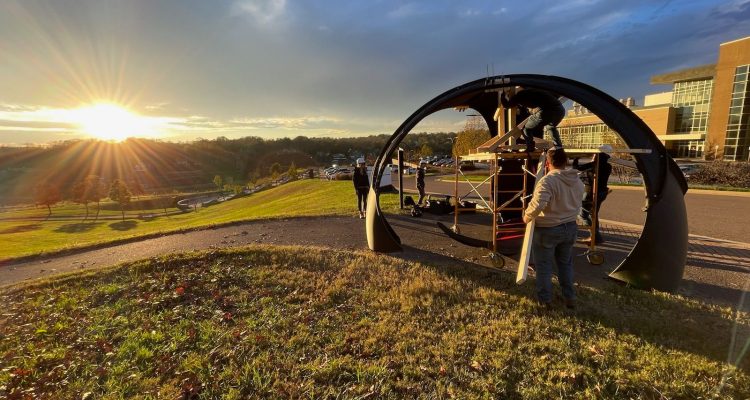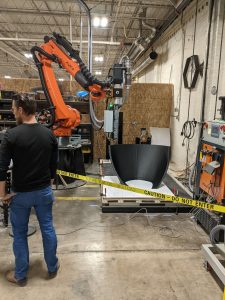For example, 3D-printed material is soft when extruded and unable to span long, unsupported horizontal projections. Large parts must also be designed as smaller components that are later assembled to accommodate the print system’s capabilities and rules of large-format, 3D printing. Loci Robotics’ equipment can print parts exceeding 10 feet long, five feet wide and six feet tall.
One of the biggest benefits of 3D-printed thermoplastics is their sustainability. Material for the Trillium structure’s carbon fiber shell was recycled from parts of an Olli 3D-printed autonomous shuttle built by Local Motors, which closed operations in 2022.
“At the end of their life cycle, thermoplastic parts can be ground up, re-pelletized and re-used to print something else,” says Heres. “This use of otherwise wasted materials is our contribution to keep plastic out of landfills, oceans and nature where it doesn’t belong.”
That’s a big draw, but only if the materials function as required. Rose says the Trillium project proves they can. “Our project demonstrates that ABS – carbon fiber reinforced in this case – can be reused multiple times for structural applications with minimal degradation,” he says.
The Trillium Pavilion also features bio-derived thermoplastics in its bases. The wood-reinforced PLA, which is made from wood flour and corn starch derived PLA, is fully biodegradable and renewable. It also reduces waste by turning wood industry byproducts like sawdust into usable products. Using it in an outdoor, covered environment inside the Trillium Pavilion will provide an important test of its durability.
Both Rose and Heres envision continued growth in 3D-printed thermoplastic architectural applications. Loci Robotics is experiencing a surge of interest in structural parts, such as 3D-printed tiny homes and interior and exterior design applications.
“The killer application for 3D printing may be its capacity for creating complex geometries, non-repetitive parts and double-curved surfaces – forms that prove too difficult and expensive for other methods,” says Rose.
Melissa O’Leary is a freelance writer in Cleveland. Email comments to melissa@good4you.org.
A KUKA robot 3D prints one of the bases for the Trillium Pavilion.



